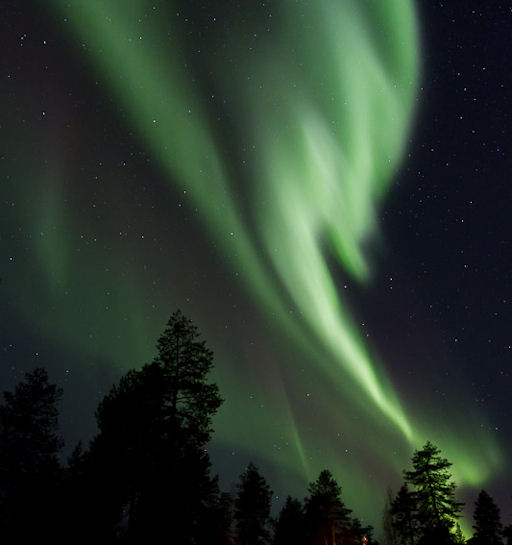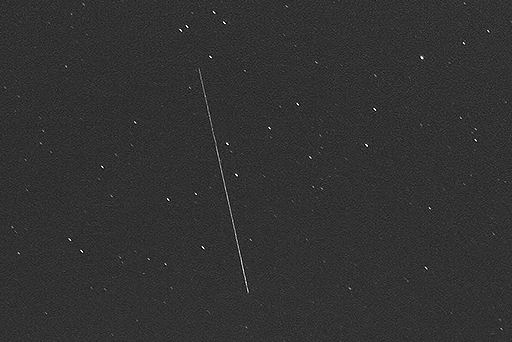Turn your cell phone into a field-tested satellite tracker. Works for Android and iPhone. | | |
SUPER-SIZED ECLIPSE: On Saturday morning, Dec. 10th, sky watchers in the western United States and Canada will witness a total lunar eclipse swollen to super-sized proportions by the Moon illusion. Get the full story from Science@NASA.
FLATLINED: With no strong flares this week, the sun's x-ray output has nearly flatlined. The quiet is expected to continue for another 24+ hours. NOAA forecasters estimate a low 20% chance of M-class solar flares. Update: Photographer Greg Piepol shows that quiet is not the same as dead.
FIRST AURORAS OF DECEMBER: In the Finnish Lapland, December began with "a warm (+3°C) rainy day and roads like ice rinks," says Muonio resident Thomas Achermann. And one more thing: "After nightfall, the clouds parted in time for a great show in the sky." He snapped this picture on Dec. 1st:

The display was caused by a solar wind stream which is buffeting Earth's magnetic field. It's a relatively minor stream, but potent enough to ignite auroras around the Arctic Circle. High-latitude sky watchers should remain alert for more auroras tonight as the solar wind continues to blow. Aurora alerts: text, phone.
PHOBOS GRUNT UPDATE: Russia's Mars probe, Phobos-Grunt, remains stuck in low Earth orbit after its main engines failed to fire on Nov. 8th. Russian and ESA antennas have made intermittant radio contact with the probe, but this has not allowed Roscosmos, the Russian space agency, to re-establish control. Unless matters improve, Phobos-Grunt will re-enter the atmosphere in January or February 2012 and become a brilliant fireball over some part of Earth
Until then, it is possible to see the doomed probe slicing brightly through the night sky:

Veteran satellite tracker Marco Langbroek took this picture from his home in Leiden, the Netherlands, on Nov. 30th. "This image was shot at 17:40 UT (30 Nov 2011) when the Phobos-Grunt was visible at 20 degrees elevation low in the west," he says. "The space probe was about magnitude +4. I also observed it one pass earlier in very deep twilight at 16:08 UT (sun at -5 degrees only with only brightest stars visible), when it made a 45 deg elevation pass. It was bright then, and an easy naked eye object nothwithstanding the bright blue sky. It was brighter than Altair, showed no brightness variation, and was very fast."
Ready to see for yourself? Spaceweather.com's online Satellite Tracker is following Phobos-Grunt. Flyby predictions may also be found on your smartphone.
Potentially Hazardous Asteroids (
PHAs) are space rocks larger than approximately 100m that can come closer to Earth than 0.05 AU. None of the known PHAs is on a collision course with our planet, although astronomers are finding
new ones all the time.
On December 2, 2011 there were 1272 potentially hazardous asteroids.
Notes: LD means "Lunar Distance." 1 LD = 384,401 km, the distance between Earth and the Moon. 1 LD also equals 0.00256 AU. MAG is the visual magnitude of the asteroid on the date of closest approach. | | The official U.S. government space weather bureau |
| | The first place to look for information about sundogs, pillars, rainbows and related phenomena. |
| | Researchers call it a "Hubble for the sun." SDO is the most advanced solar observatory ever. |
| | 3D views of the sun from NASA's Solar and Terrestrial Relations Observatory |
| | Realtime and archival images of the Sun from SOHO. |
| | from the NOAA Space Environment Center |
| | the underlying science of space weather |

